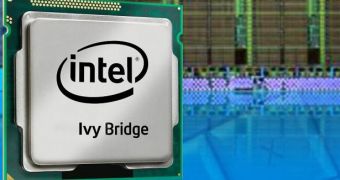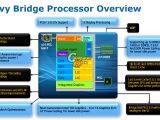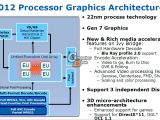Intel upcoming Ivy Bridge processors will bring a series of improvements to the Sandy Bridge on-die graphics core, but the slowest GPUs will still feature only six EUs, just as it’s the case with the current HD 2000 integrated video processor.
Intel's Ivy Bridge processors are a die 22nm shrink of the Sandy Bridge core and one of the main changes that these new CPUs bring to the table is the inclusion of an improved graphics core.
This will pack full support for DirectX 11 and the information available until know stated that the integrated graphics features 33% more execution units than Sandy Bridge.
However, it now appears that only select Ivy Bridge processors will benefit from this change as the rest of the company's chips will still pack six EUs.
This would mean that graphics performance should be almost on par with that of the HD 2000 on-die GPU.
However, other features that are specific to the Ivy Bridge graphics core, such as the support for three independent displays, support for the OpenCL framework and Blu-ray 2.0 hardware accelerated video decoding, will be kept.
Outside of the improved graphics core and media acceleration engine, Ivy Bridge also packs enhanced AVX and AES-NI support, an integrated PCI Express 3.0 controller as well as native USB 3.0 thanks to the Panther Point chipset.
PCI Express 3.0 should double the bandwidth available for add-in cards from 500MB/s per lane to 1GB/s per lane.
The platform will also feature support for the Thunderbolt technology, but this won't be implemented at the chipset level, but it will come as an add-on.
The first processors based on the Ivy Bridge architecture are expected to make their entrance at the beginning of next year, together with the 7-series Intel Panther Point chipsets. (via ComputerBase)

 14 DAY TRIAL //
14 DAY TRIAL // 

